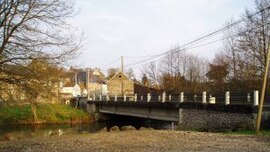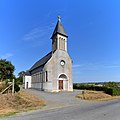Cahan | |
|---|---|
 The bridge in Cahan | |
| Coordinates: 48°51′35″N0°26′31″W / 48.8597°N 0.4419°W | |
| Country | France |
| Region | Normandy |
| Department | Orne |
| Arrondissement | Argentan |
| Canton | Athis-Val de Rouvre |
| Intercommunality | CA Flers Agglo |
| Government | |
| • Mayor (2020–2026) | Xavier De Saint Pol [1] |
Area 1 | 5.87 km2 (2.27 sq mi) |
| Population (2022) [2] | 162 |
| • Density | 28/km2 (71/sq mi) |
| Time zone | UTC+01:00 (CET) |
| • Summer (DST) | UTC+02:00 (CEST) |
| INSEE/Postal code | 61069 /61430 |
| Elevation | 50–242 m (164–794 ft) (avg. 140 m or 460 ft) |
| 1 French Land Register data, which excludes lakes, ponds, glaciers > 1 km2 (0.386 sq mi or 247 acres) and river estuaries. | |
Cahan is a commune in the Orne department in north-western France.





